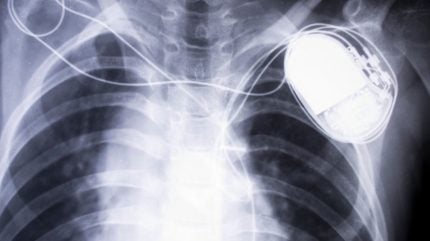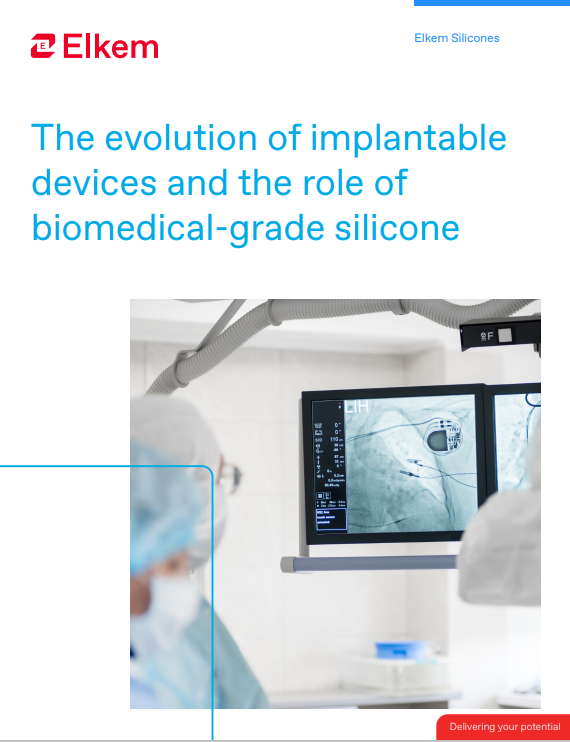
Today, there are a wide variety of medical devices that employ implantable silicones, including pacemakers, cochlear implants, stents, and implants used in cosmetic and reconstructive surgeries. Many of these devices have been used for decades, yet manufacturers continue to evolve and advance them, often with the goal of achieving smaller form factors yet greater complexity.
In the pacemaker market, for example, innovation in leadless and dual chamber stimulation is continuing, making devices smaller and implementing wireless communication technology. In 2022, almost 1.5 million people around the world received a pacemaker, and GlobalData expects this figure to climb to 2.5 million by 2033.
Silicone’s flexibility makes it an excellent material for miniaturisation and the creation of smaller, more complex medical equipment. Further, silicones can be ideal in drug delivery applications for patients with chronic conditions, providing long-term drug eluting solutions for controlled medication release.
The benefits of silicone in medical devices
“Silicone is probably the most studied material that’s used in implantables today,” says Michael Goglia, regional marketing manager for the Americas at Elkem Silicones, a global manufacturer with over 60 years of experience working with silicones.
“Typically, silicone doesn’t interact negatively in the body or with other chemical structures, reducing the risk of biological issues when in contact with human tissue,” says Goglia. “Also, silicone is hydrophobic by nature, so it repels water and bodily fluids, contributing to biocompatibility. It’s easily sterilizable and that is also a contributing factor to its usage in medical devices. It can be sterilised by multiple different mediums: gamma, autoclave or ethylene oxide.”
Used in implantable devices since the 1940s, silicone can be exposed to different temperature ranges over extended periods without issue and is very flexible, allowing implants to fit through smaller incisions and expand once inside the body.
“It can even be an insulator,” says Goglia, “used to insulate devices such as neurostimulators and pacemakers. It will protect the rest of the body from the electrical current that is used to keep the heart pacing. It can also act as a corrosion inhibitor; whether it be titanium or other metal components, silicone can encapsulate [the material] to make it more biocompatible and protect it from corrosion.”
Implantable silicone materials and their differences from other grades
Implantable silicones differ from general medical-grade silicones due to more rigorous manufacturing controls, testing and regulatory requirements to ensure long-term biocompatibility and safety for permanent or long-term implantation.
While testing and manufacturing of medical-grade silicones is both controlled and rigorous, when it comes to implantables, which can stay with you for a lifetime, quality control and documentation goes up significantly, says Goglia.
For example, implantable silicones are produced in a Class 7 clean room environment, whereas medical grade silicones are produced in a controlled, but not certified, clean room environment, he says. Other differences include being produced under stricter quality standards (ISO 13485) and traceability and testing regimens.
Implantable silicones require lot-to-lot traceability of the raw materials, with every batch undergoing Fourier Transform Infrared Spectroscopy (FTIR) scans and cytotoxicity testing. This is because implantable silicones are considered long-term implants by the US FDA (>30 days) and require more stringent regulatory approval. For comparison, medical-grade silicones may only be used for shorter-term (<29 days) implants or external contact applications and so only need annual cytotoxicity testing.
Silicone’s versatility in implantable devices
Silicone’s biocompatibility, hydrophobicity and flexibility make it a popular choice for medical implants. Silicone’s flexibility also allows miniaturisation and customisation of implantable devices. The ability to precision mould silicone enables the development of smaller, more intricate medical devices, which can be tailored to the patient’s anatomy through techniques like 3D printing for a custom fit.
“As devices get smaller, micro moulding of silicone can be done at very high resolutions compared to thermoplastics or other materials,” explains Goglia. “So, with the advancement of digital imaging, you can take a snapshot of the body and make an exact fit to the patient, whether that’s via a mould or 3D printed.”
Future developments
Goglia says that in the latest and most innovative medical devices, wireless communication is possible. “A sensor is implanted into the body which can communicate back to your cell phone, for instance, and monitor how your body’s interacting,” he says.
Neurostimulators, used in Parkinson’s treatment and spine pain management, often have a conductive portion that allows patients to control the sensitivity through their phone. A silicone elastomer may be used in the future due to its implantability benefits and potential cost-effectiveness.
Other applications for implantable devices include calf implants and finger and toe joints. The soft cartilage portion provides cushioning and dampening, says Goglia.
In conclusion, while medical-grade and implantable silicones are chemically identical, their manufacturing procedures and quality control techniques differ to allow for the long life of the implantable device. Silicone is hydrophobic, inert and biocompatible, an excellent material for implants, providing benefits that include pharmaceutical delivery, insulation, miniaturisation, and the flexibility to customise 3D printed devices.
For more details on the role of silicone in the evolution and next generation of implantable medical devices, download the free paper below.



